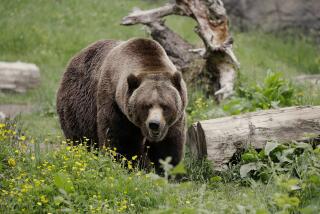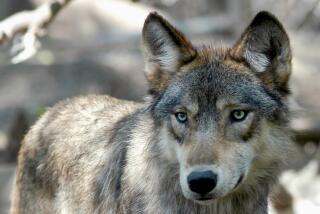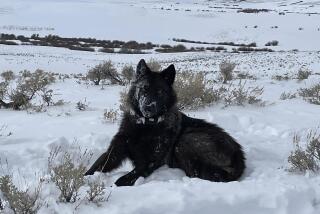Lynx Reintroduction Proceeds in Colorado
DENVER â Under attack when four of the first five cats starved, an experimental attempt to reintroduce the elusive Canada lynx has won the approval of Coloradoâs Wildlife Commission.
The transplant population has been doing better lately, and the commission voted Jan. 13 to allow state biologists to transplant an additional 50 animals from Canada and Alaska.
âI think it has been successful. It was controversial because of the deaths, and those are always painful. But they have learned an enormous amount about how to do these now,â said Diane Gansauer, executive director of the Colorado Wildlife Federation. Her group was one of several environmental groups supporting the program.
The U.S. Fish and Wildlife Service and U.S. Forest Service also declared their support.
Todd Malmsbury, spokesman for the state Division of Wildlife, said the early deaths were no surprise. âNo one has ever tried to reintroduce the lynx in its native habitat in the Rockies before,â he said.
Malmsbury said 15 more animals are en route to Colorado from British Columbia, and biologists hope the population will soon begin breeding.
After the deaths were reported, animal rights groups called on the commission to cancel the program. In the meantime, more animals had been released; officials said if the mortality rate exceeded 50% they would consider suspending it.
âThe public had the idea it would be easier than it is. High mortality rates are common in such programs,â Gansauer said. So far, 41 lynx have been released in remote areas of southwestern Colorado, and biologists believe as many as 26 have survived.
Each was fitted with a radio collar that allows biologist to track them from aircraft. The radios emit a âmortality signalâ alerting biologists when an animal has died.
The lynx also has become a symbol of opposition to ski expansions and growth in Western tourism areas. The last confirmed sighting of a lynx in Colorado was in 1973 near Vail.
Environmental groups opposed Vailâs expansion into what they considered prime lynx habitat. The Earth Liberation Front, an eco-terrorist group responsible for a series of attacks on logging companies, set fires that caused $12 million in damage on Vail Mountain in 1998 to protest the expansion.
The nocturnal animals, weighing up to 44 pounds and adept at swimming and tree climbing, have snowshoe-like paws that make it easier for them to pad through deep snow. Their black-tufted ears, short head and large paws distinguish them from the bobcat, a relative.
The lynx is listed as endangered by the state of Colorado. The U.S. Fish and Wildlife Service is under pressure from environmental groups to list the animal as threatened or endangered. Earlier this month it said it couldnât meet a court-imposed deadline for making that decision but added that it expected a ruling within a month or so.
Some, but not all, outfitters and agricultural groups have opposed reintroducing the lynx because they fear it will eventually result in more restrictions on their activities.
More to Read
Sign up for Essential California
The most important California stories and recommendations in your inbox every morning.
You may occasionally receive promotional content from the Los Angeles Times.










